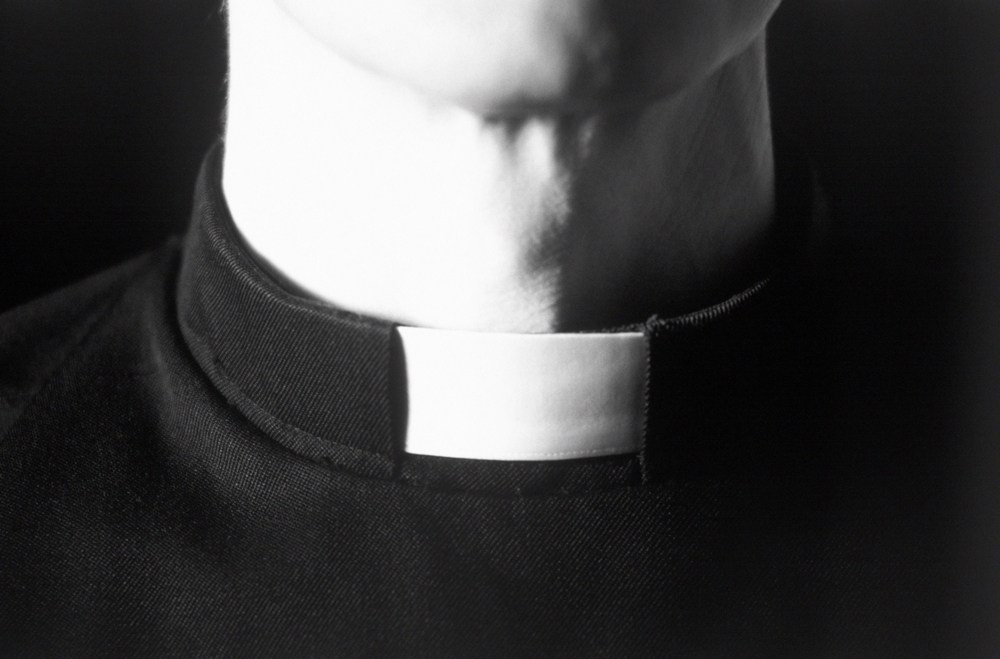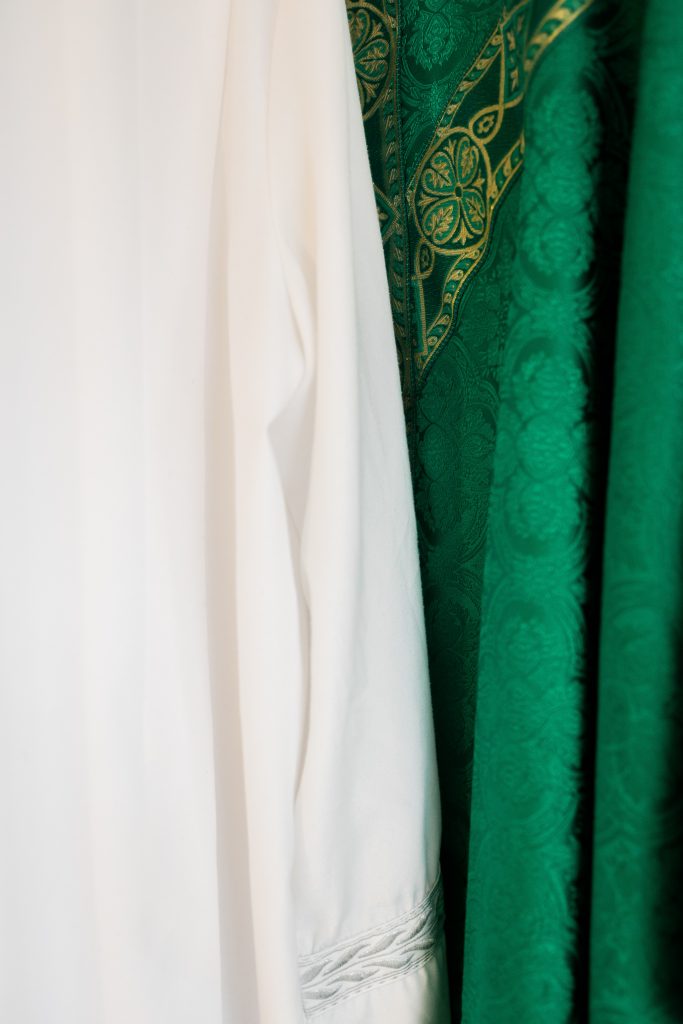Clericalism?

Some criticized Francis’s decision to change Canon Law and allow all people to be acolytes and lectors because it reinforces the clericalism the Pope wishes to eradicate. I am especially sensitive to this charge because I bristle at the least exercise of clericalism. But it’s so odd – it’s only clerical when women can get the benefits.
The boundary between clericalism and ministry is fraught. If the celebration of the Eucharist is the celebration of all the baptized, the acolytes and lectors (in this case) being members of the community is important. Today you do a reading; tomorrow I serve the cup. We are all in this together. This is why I like these ministers coming from and returning to the congregation, not staying on the altar, as has been the tradition with servers for a long time.
Servers provide the perfect example of the tendency to clericalism. They are vested in distinctive garb, which those in the more recently opened ministries are not. Why this was done years ago was clerical: grooming them to be priests. Cardinal Raymond Burke in the LA Times/Chicago Tribune editorial by Michael McGough confirms: “It requires a ‘certain manly discipline to serve as an altar boy in service at the side of a priest, and most priests have their first deep experiences of the liturgy as altar boys. If we are not training young men as altar boys, giving them an experience of serving God in the liturgy, we should not be surprised that vocations have fallen dramatically.’” Well, not everywhere.
And while we are not grooming the people who serve in the other roles for future ordination, some are tempted to set them apart in processions and seating, for example. Should we?

Take Zoom ministries. All of us lift our plates and cups. Many of us read. We do this as baptized members of the community. Is anything more necessary? Should we be installed as ministers, which is what the Pope has now allowed?
English “presbyter” Thomas O’Loughlin in La Croix International presents inspiring descriptions of lector and Eucharistic minister for those inclined to what is to me a more clerical understanding. Those roles may be necessary in a large parish. Competence matters, though he doesn’t exactly say that. Rather, he argues that elevating these roles de-centers the priest, which is good if you oppose clericalism. O’Loughlin examines the new order in the light of clerical resistance to the spirit of Vatican II, and asks a series of questions about the implementation of the change to Canon Law. Will perceptions and attitudes change?
Christopher Lamb in The Tablet blog also has a historical focus. He places Francis’s action in line with declericalizing moves by Paul VI and John Paul II after Vatican II. Lamb quotes Francis’s 2015 address on the Synod of Bishops: “But in this Church, as in an inverted pyramid, the top is located beneath the base. Consequently, those who exercise authority are called ‘ministers,’ because, in the original meaning of the word, they are the least of all.” The ordained are to serve. They are not to be “in charge.” Of course, we’re waiting for that understanding to get up to the base, especially as it has to go through the middle of that pyramid.
Lamb also examines the revolutionary potential of the Amazon synod’s evidence for the need for expanded ministries. “More than the specifics of changes, however, it is the overall shift in the theology of ministry which has taken place in the Church – often slowly – which is most noticeable. Like the mustard seed, it is sometimes the smallest of shifts which can eventually grow into the largest of the trees, and make the biggest difference.”
Gradualism. As McGough concludes, “In 1975 the late Raymond Brown, perhaps the foremost Catholic biblical scholar of his time, advocated that women be given a range of roles at Mass. He mentioned women serving as lectors and distributing Holy Communion and said that ‘younger girls’ could serve at the altar. ‘When all of these things are done,’ he wrote, ‘we may be in a better position to discuss intelligently the ordination of women priests.’” That was the year WOC began, and we’re still discussing it intelligently!
At first I thought that Robert Mickens in La Croix was just grumpier. But as I read it over again I came to understand what he calls Francis’s “clever wordsmithing,” as in this quotation from the motu proprio: “This reservation made sense in a particular context, but it can be reconsidered in new contexts, always having as its criterion fidelity to Christ’s mandate and the desire to live and proclaim the Gospel transmitted by the Apostles and entrusted to the Church so that it may be listened to in a religious manner, kept in a holy manner and faithfully proclaimed.” You understand why I had to read this over and over.
Mickens says that rather than opening the door, here Francis has “taken it off the hinges,” an image I especially like. He concludes, “There is no theological rationale or divine command to allow women access to some ministries, but then deny them access to others. These are man-made dispositions, especially because Jesus never conferred a ‘priesthood’ as we know it today on anyone.”
This is the ultimate declericalizing message. It should be encouraging to anyone who seeks to serve in any ministry. And it should expand our understanding of what ministry to the people of God actually is and who are actually serving the church.

3 Responses
So, women should not be clericalized, but men should be clericalized?
Thank you for this post. I had seen some of the post you highlighted, but I had not seen others. I especially liked : “Mickens says that rather than opening the door, here Francis has “taken it off the hinges,” an image I especially like. He concludes, “There is no theological rationale or divine command to allow women access to some ministries, but then deny them access to others. These are man-made dispositions, especially because Jesus never conferred a ‘priesthood’ as we know it today on anyone.” This other quote is powerful: “Lamb quotes Francis’s 2015 address on the Synod of Bishops: “But in this Church, as in an inverted pyramid, the top is located beneath the base. Consequently, those who exercise authority are called ‘ministers,’ because, in the original meaning of the word, they are the least of all.” The ordained are to serve. They are not to be “in charge.” Of course, we’re waiting for that understanding to get up to the base, especially as it has to go through the middle of that pyramid.” The whole notion of “clericalism” I find to be multifaceted. In the U.S. Church it seems to me that because live “comfortably” they are not much open to change.
In my last two parishes, most of the communion ministers were women, and more than half of the lectors were men. Interesting! Are women more used to serving food and drink, and less comfortable speaking to the congregation? I do think that opening up these roles to women has created more of a sense of active participation that may have ripple effects helpful to the cause of women’s ordination. I have also seen women administrators in a couple of parishes doing much of the usual work of the pastor, except the sacramental roles. They were great, and generally well received by their congregations. All these changes, I think, have made most the people in these parishes very receptive to the idea of women as deacons, and even priests.